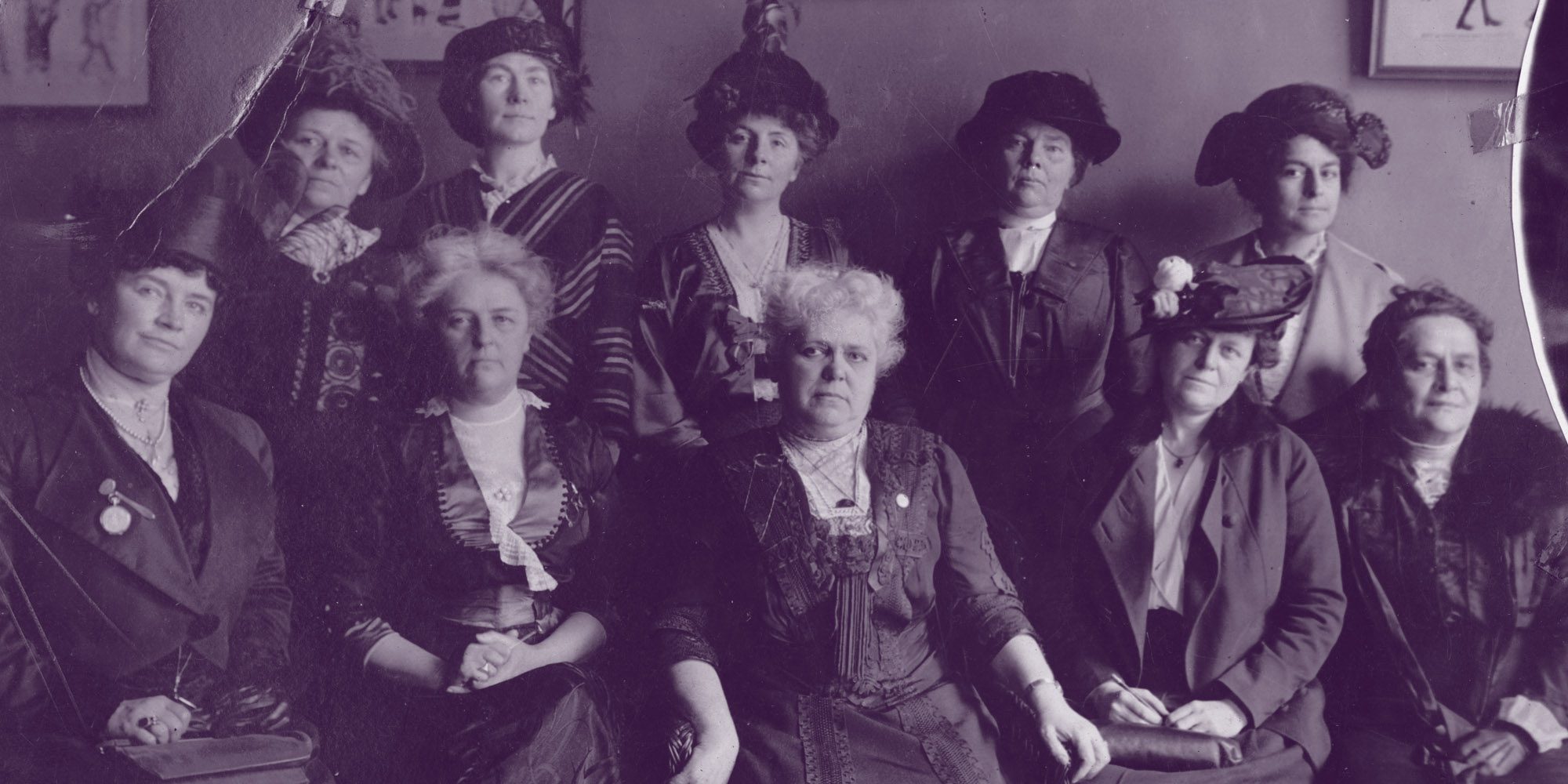Women of the Nation Arise!
Staten Islanders in the Fight for Women’s Right to Vote
Acknowledgements ResourcesOrganize
Prior to the 19th Amendment, laws barred women from voting, but that did not stop them from organizing.
Staten Island women founded church groups and women’s clubs that operated as political structures. Within these organizations, women debated issues, voted on decisions, and elected officers. Suffragists used these networks to organize their campaign for suffrage.
“I shall enjoy the exercise of my new ‘rights’ much more to know I have ‘done my bit’ towards helping to win them!”
– Linda French
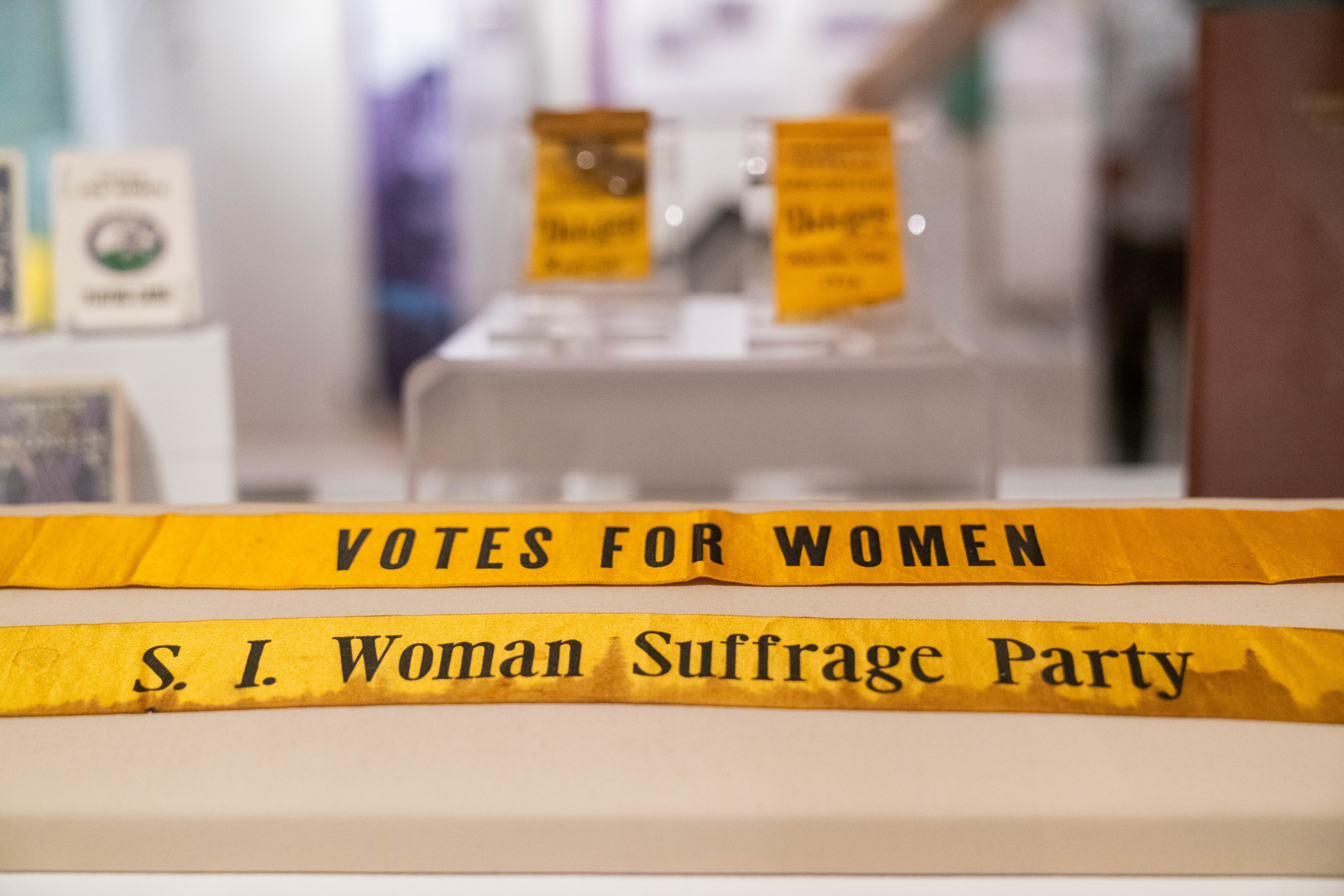
Sashes Collection of Historic Richmond Town Photo by Christine Cruz
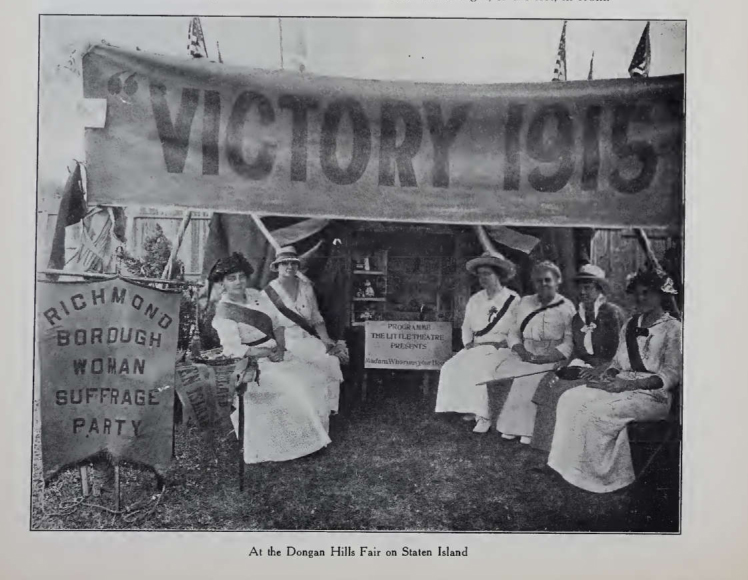
The Women Voter, October 1917 Gift of Arthur Hollick Collection of Staten Island Museum
The Staten Island Woman Suffrage Party (SIWSP)
A In 1910, local activists Mary Otis Willcox, Edith Whitmore, and May Sexton Simonson formally organized the Staten Island Woman Suffrage Party (SIWSP) to campaign for women’s right to vote in New York State. SIWSP leaders used the Island’s powerful political, social, and economic networks to recruit over 10,000 registered members by the time New York State voters passed the amendment giving women the vote in 1917. Members spanned the political spectrum. Liberals, conservatives, philanthropists, schoolteachers, and temperance and labor activists banded together to campaign for political equality for women. Despite their diverse political affiliations, most SIWSP members were white. African-American women on Staten Island created their own activist networks through clubs, sororities, and parish communities.
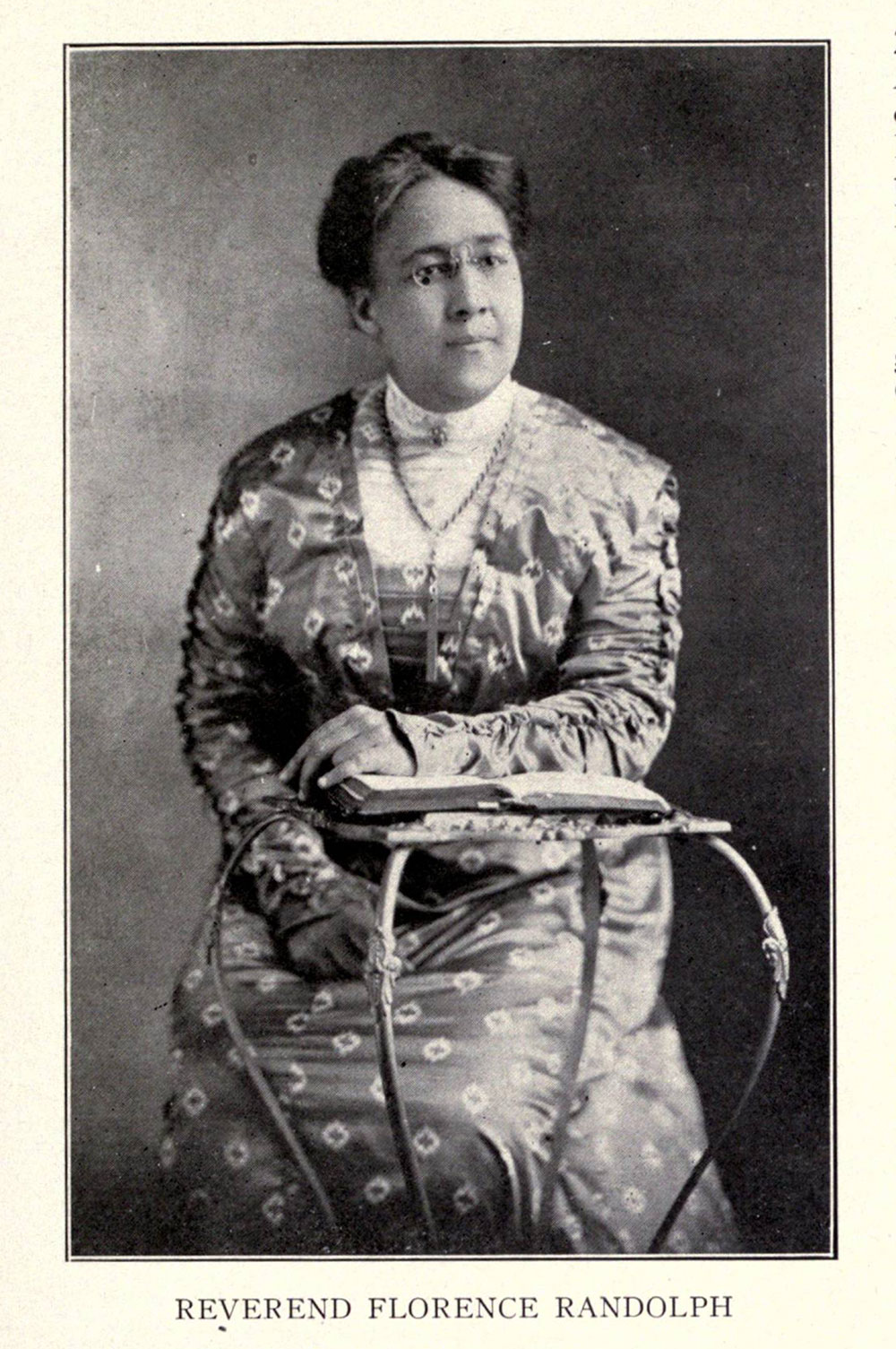
The National Encyclopedia of the Colored Race (1919) Courtesy of the University of California Libraries
Florence Spearing Randolph (1866 - 1951)
Founded at the close of the 18th Century, the African Methodist Episcopal (AME) Zion Church became a force for social change. Many of the leading figures in the abolition movement including Harriet Tubman, Sojourner Truth and Frederick Douglass were members of the “freedom church.” Staten Island’s Rossville (est. 1850) and Shiloh (est. 1906) AME Zion Churches belonged to the New Jersey Conference and were active in its initiatives. In 1916, women activists founded the New Jersey Federation of Colored Women’s Clubs and elected Reverend Florence Spearing Randolph as president.
In 1886, Randolph moved from South Carolina to New Jersey with her husband Hugh Randolph to work as a dressmaker. She became involved with the Monmouth Street AME Zion Church in Jersey City, where she taught Sunday school. She studied and received her preacher’s license in 1897, becoming one of few women in the Church to earn this distinction. By that time, she was already politically active as a member of the Women’s Christian Temperance Union.
Randolph’s election demonstrated the deep ties between civil rights activism and the AME Zion church in the region. Under Randolph’s leadership, the federation created departments dedicated to education, temperance, “race history,” and, of course, suffrage. Rossville’s Buds of Promise Club represented Staten Island in the Federation. From 1919 until 1921, Randolph served as pastor of Rossville AME Zion Church in Staten Island. During this time, she continued as President of the New Jersey Federation of Colored Women’s Clubs and as a member in the New Jersey Republican State Committee.
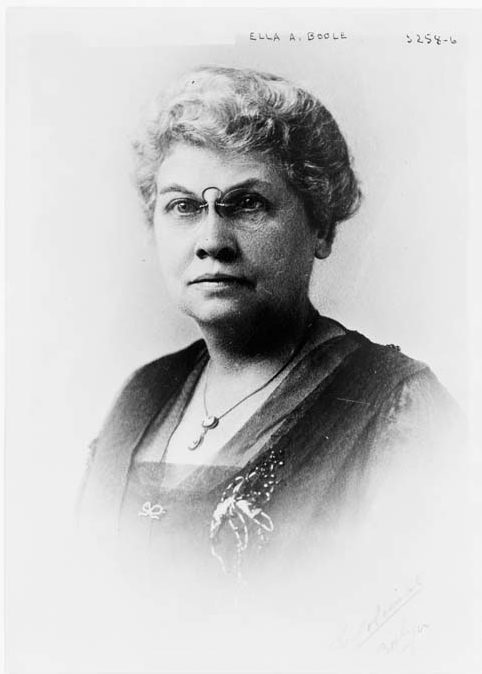
Photograph, November 19, 1925 Library of Congress, Prints & Photographs Division | LOC 93504223
Ella Boole (1858 – 1952)
In the 1888, Ella Boole moved to Staten Island with her husband Reverend William Boole. The couple were among the founders of Prohibition Park, Staten Island, a “dry” community and summer retreat for those who abstained from drinking alcohol as a means of social reform. Beginning in the 1890s, Ella Boole rose through the ranks of the Women’s Christian Temperance Union (WCTU), an international organization that campaigned for abstinence from alcohol and women’s suffrage as avenues to protect women from abuse or destitution at the hands of alcoholic husbands or fathers. Boole ascended to the Presidency of the World WCTU in 1931 and remained in the role for 16 years. She also ran for the United States Senate in 1920.
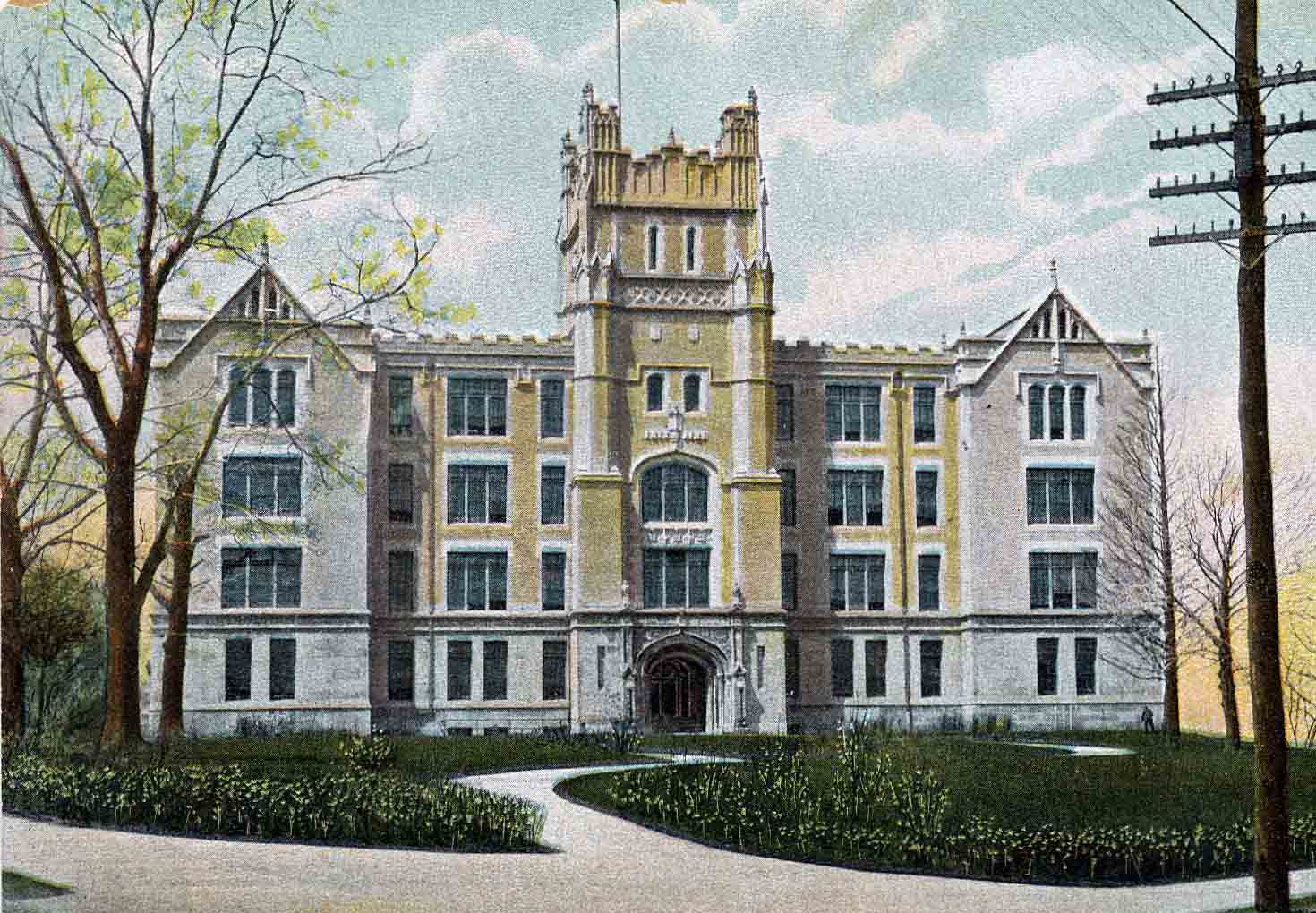
Postcard Collection of Staten Island Museum | WTD 3133
Suffrage Activism in High Schools
Teachers and students at the island’s high schools participated in the woman suffrage movement. Mary Otis Willcox moderated a High School Suffrage League for students interested in helping the cause. Curtis High School students argued the issue in a formal debate in 1908. The yearbook reported that “the men who were present saw their beloved privileges quickly vanishing before the strong and determined women of their generation.” In 1913, Curtis senior, Margaret Macklin, made her yearbook quote, “Her chief ambition is ‘Votes for Women’.” At least four teachers on the faculty at Curtis High School, Linda French, Inez Corcilius, Mabel Burdick, and Clara Whitmore, attended party meetings and marched in New York City’s suffrage parades. In letters home to her mother, Linda French wrote passionately about participating in suffrage activism alongside her fellow teachers.
A graduate of Boston College, Linda French was working as a teacher in Manhattan when she marched in the first Parade for Woman Suffrage in New York in 1912. “I wouldn’t have missed it for anything,” she declared in a letter to her mother. That same week she attended a Boston College Alumni dinner and met Clara Whitmore and Florence Shepherd of Curtis High School, a connection that would result in Linda’s move to Staten Island the following year to teach German at Curtis and join her fellow teachers in continued suffrage activism.
Click here to read selections from Linda French’s correspondence with her mother in Massachusetts.

The Brooklyn Daily Eagle March 8, 1913
The Anti-Suffrage Movement
Not all women who belonged to Staten Island’s clubs or philanthropic organizations thought that women should have the right to vote. In fact, in response to the renewed energy of the pro-suffrage movement after their defeat at the 1894 Constitutional Convention, anti-suffragists, commonly known as “antis,” founded the New York State Association Opposed to Woman Suffrage in 1895. Prestonia Mann Martin and her husband John Martin of Staten Island were nationally recognized suffrage opponents, who hosted anti-suffrage events at their home on Grymes Hill. Prestonia Martin was an accomplished author, speaker, and newspaper contributor, who argued that woman suffrage would be harmful to the family because it would “put the father out of business,” depriving him of his role as political authority in the household.
Read Feminism: Its Fallacies and Follies by John and Prestonia Martin here.
